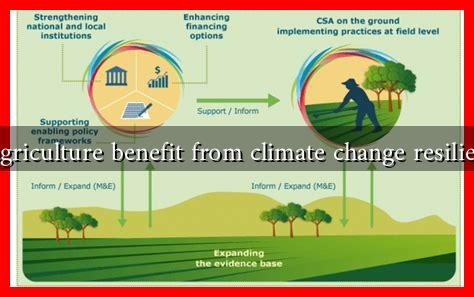-
Table of Contents
- How Can Fall Agriculture Benefit from Climate Change Resilience Strategies?
- Understanding Climate Change Impacts on Agriculture
- Key Resilience Strategies for Fall Agriculture
- 1. Crop Diversification
- 2. Cover Cropping
- 3. Water Management Techniques
- 4. Integrated Pest Management (IPM)
- Case Studies: Successful Implementation of Resilience Strategies
- Conclusion
How Can Fall Agriculture Benefit from Climate Change Resilience Strategies?
As climate change continues to reshape agricultural practices, farmers are increasingly seeking innovative strategies to adapt and thrive. Fall agriculture, which encompasses the cultivation of crops during the autumn months, can significantly benefit from climate change resilience strategies. These strategies not only help mitigate the adverse effects of climate change but also enhance productivity and sustainability. This article explores various resilience strategies that can be employed in fall agriculture, supported by relevant examples and statistics.
Understanding Climate Change Impacts on Agriculture
Climate change poses several challenges to agriculture, including:
- Increased temperatures leading to heat stress on crops.
- Altered precipitation patterns resulting in droughts or flooding.
- Increased pest and disease pressure due to warmer climates.
- Soil degradation and erosion exacerbated by extreme weather events.
These challenges necessitate the adoption of resilience strategies to ensure the sustainability of fall agriculture. By implementing these strategies, farmers can not only protect their crops but also enhance their overall productivity.
Key Resilience Strategies for Fall Agriculture
1. Crop Diversification
One of the most effective resilience strategies is crop diversification. By planting a variety of crops, farmers can reduce their vulnerability to climate-related risks. For instance, if a particular crop fails due to drought, other crops may still thrive, ensuring a more stable income. Research from the Nature Journal indicates that diversified farms are more resilient to climate variability.
2. Cover Cropping
Cover crops, such as clover or rye, can be planted during the fall to improve soil health and prevent erosion. These crops help retain moisture, suppress weeds, and enhance soil fertility through nitrogen fixation. A study by the USDA Agricultural Research Service found that cover cropping can increase soil organic matter by up to 1% per year, significantly improving soil structure and resilience.
3. Water Management Techniques
Effective water management is crucial for fall agriculture, especially in regions experiencing altered precipitation patterns. Strategies include:
- Implementing drip irrigation systems to optimize water use.
- Constructing rainwater harvesting systems to capture and store water.
- Utilizing soil moisture sensors to monitor and manage irrigation needs.
These techniques not only conserve water but also ensure that crops receive adequate moisture during critical growth periods.
4. Integrated Pest Management (IPM)
As climate change alters pest dynamics, adopting Integrated Pest Management (IPM) strategies becomes essential. IPM combines biological, cultural, and chemical practices to manage pest populations sustainably. For example, the use of beneficial insects, crop rotation, and resistant crop varieties can significantly reduce pest pressure while minimizing chemical inputs.
Case Studies: Successful Implementation of Resilience Strategies
Several farms across the globe have successfully implemented climate change resilience strategies in their fall agriculture practices:
- Rodale Institute (USA): This research farm has demonstrated that organic cover cropping can improve soil health and increase yields by 30% compared to conventional methods.
- Farmers in the Netherlands: By adopting precision agriculture techniques, Dutch farmers have reduced water usage by 20% while maintaining high crop yields.
- Australian Grain Growers: Many Australian farmers have adopted crop diversification and IPM strategies, resulting in a 15% increase in resilience to climate variability.
Conclusion
As climate change continues to impact agricultural practices, fall agriculture stands to gain significantly from the adoption of resilience strategies. By diversifying crops, implementing cover cropping, managing water resources effectively, and utilizing integrated pest management, farmers can enhance their productivity and sustainability. The examples and case studies highlighted in this article demonstrate that these strategies are not only feasible but also effective in building resilience against climate change. As we move forward, it is crucial for farmers, policymakers, and researchers to collaborate in developing and promoting these strategies to ensure a sustainable agricultural future.

